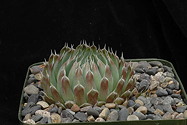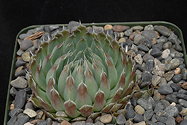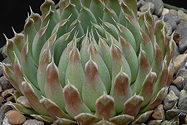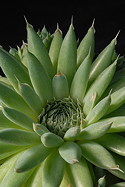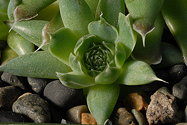We have tried to grow this fascinating, cold-hardy member of the Crassulaceae (stonecrop family) several times at the Huntington over the years, but it has never lasted long. It appeared that the heat and aridity of our southern California climate was not to its liking. However, when I visited Uhlig’s nursery in Germany, in 2012, I saw it growing in profusion in their warm greenhouses, suggesting that theirs might be a more heat-tolerant form. We imported a small quantity and it has thrived outdoors in our shade house, allowing us to propagate more in the interim. Native to the arid areas of Mongolia, Russia (E. Siberia), N China and North Korea, it is hardy to -30 degrees F. This is partly due to its dimorphic growth habit. Winter rosettes are composed of the tightly packed, spine-tipped leaves that give this plant its specific name. Summer leaves are larger and more succulent, more widely spaced and spreading to maximize photosynthesis during the growing season. Toward the end of the growing season, these form a crown around the developing winter rosettes. The generic name means “mountain spike” in reference to the inflorescences, spikes to 30 cm or more tall bearing ivory-white flowers. The flowering rosettes are monocarpic, rather like miniature agaves. However, in warm climates, we are not likely to see many of these. We don’t get enough chill to set buds. Rather, the plants proliferate in what must seem to them like an endless summer. Divisions of HBG 133584, $8.
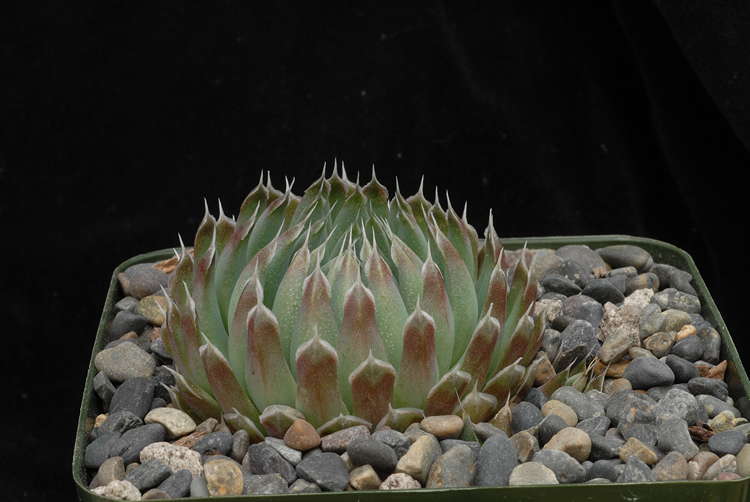
Published in the Cactus and Succulent Journal, Vol. 90 (2), Summer 2018
